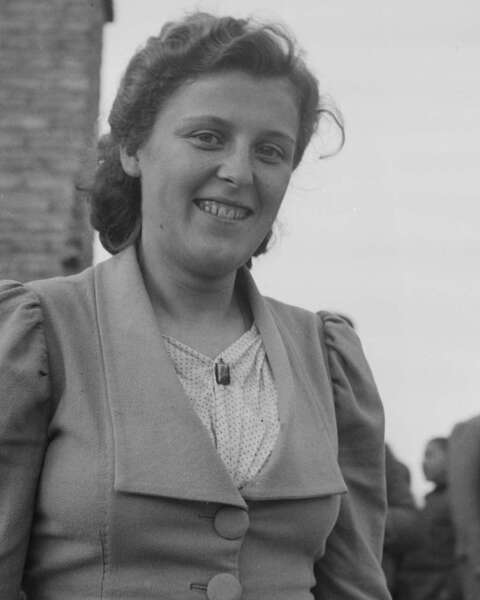By Ted Lipien
Lieutenant Colonel Henry I. Szymanski was a U.S. Army Liaison Officer to the Polish Army created under the command of General Władysław Anders during the Second World War II which fought the Germans alongside American and British troops in North Africa and Italy. On November 22, 1942, Lt. Col. Szymanski sent a report on Polish-Russian relations to the Military Intelligence Division, War Department General Staff (G-2), in Washington, DC., in which he discussed Polish-Soviet relations. Henry Ignatius Szymanski was a non-graduating member of the U.S. Military Academy at West Point, Class of 1919. He came from a Polish American family and was a fluent Polish speaker. He retired as a U.S. Army Colonel. He was awarded the Legion of Merit for exceptionally meritorious conduct in the performance of outstanding services to the Government of the United States with the American Military Mission to Egypt from 1942 to 1943. He retired as a U.S. Army Colonel.1
In August 1942, Lt. Col. Szymanski saw and took photos of many starved and dying Polish refugees, including children, who had been evacuated with the Anders Army from Soviet Russia to Iran. In his lengthy report, which was classified as secret and not published until 1952, he made several observations about the deplorable condition of former Polish prisoners and slave laborers who had managed to escape from the Soviet Union.
The children had no chance. It is estimated that 50% have already died from malnutrition. The other 50% will die unless evacuated to a land where American help can reach them. A visit to any of the hospitals in Teheran will testify to this statement. They are filled with children and adults who would be better off not to have survived the ordeal.2
To protect Stalin and the anti-Germany military alliance with Moscow, pro-Soviet propagandists in President Franklin D. Roosevelt’s administration did not publish photos of Polish children who were starved, ill and near death when they were evacuated from Soviet Russia to Iran in 1942. Likewise, OWI’s Voice of America (VOA) radio broadcasts did not mention Soviet executions of Polish prisoners of war and mistreatment of Polish deportees, including women and children, in the Soviet Gulag camps and collective farms, to which they had been sent as slave laborers. VOA’s radio programs for foreign audiences and a broadcast by OWI Director Elmer Davis targeting Americans spread instead Soviet propaganda lies that mass executions of Polish prisoners in Soviet Russia carried out by the NKVD secret police in 1940, known collectively as the Katyń Forest massacre, were carried out by the Germans after they had occupied the area in 1941. Americans and foreigners alike were misled by Roosevelt administration’s propaganda about Stalin and the Soviet regime — a point highlighted in bipartisan criticism after the war.
The bipartisan Select Committee to Conduct an Investigation and Study of the Facts, Evidence and Circumstances of the Katyn Forest Massacre, also known as the Madden Committee, strongly implied that Roosevelt administration officials hid, suppressed and censored information about Soviet atrocities. The committee blamed it in 1952 on “a strange psychosis that military necessity required the sacrifice of loyal allies and our own principles in order to keep Soviet Russia from making a separate peace with the Nazis.” The committee pointed out that “this psychosis continued even after the conclusion of the war.”
In a warning about a corrupting effect of foreign and domestic propaganda combined with censorship, the Madden Committee noted that “most of the witnesses testified that had they known then what they now know about Soviet Russia, they probably would not have pursued the course they did.”3
U.S. Government institutions responsible for false propaganda about Polish and other deportees in the Soviet Union, the Katyń lie, and misleading information about wartime refugees from Russia never admitted that they had done anything wrong and have insisted through even the most recent statements of their officials that the Voice of America was created during the Second World War to broadcast only truthful news. Radio Free Europe, also funded by U.S. tax dollars, however, never lied about Katyń or censored information about the plight of Polish and other prisoners in the Soviet Gulag. During most of the Cold War, especially in later years, VOA Polish Service broadcasters also played a positive role of bringing uncensored news and offering moral support to the victims of communism.
Americans had been lied to and were misled by Soviet propaganda being served to them by their own propaganda agency run by strongly pro-Soviet Roosevelt administration officials. But not all Americans were so devious or naive. Many, including members of Congress and some independent journalists, saw through the coordinated propaganda effort of Soviet and U.S. governments and tried to expose it.
The United States eventually took steps to oppose Soviet post-war expansion and to counter Soviet disinformation during the Cold War. It took several more decades before these efforts helped to restore freedom and democracy in East Central Europe.
Even in the later U.S.-led process of reversing the effects of wartime collusion to protect Stalin and to help him establish communist regimes in East-Central Europe, the story of the Polish wartime refugees who had fled from Russia and those who had already died in Soviet captivity has never truly emerged as a much needed warning about the evils of communism, the initial betrayal of faithful allies, and the insidious dangers of propaganda.4
Photos by Lt. Col. Henry I. Szymanski, U.S. Army

Photo by Lt. Col. Szymanski, U.S. Army. 
Photo by Lt. Col. Szymanski, U.S. Army. 
Photo by Lt. Col. Szymanski, U.S. Army. 
Photo by Lt. Col. Szymanski, U.S. Army.
- Twelve-year-old boy, Polish evacuee from Russia, August 1942
- Six-year-old boy, Polish evacuee from Russia, August 1942
- Three sisters, ages 7, 8, and 9, Polish evacuees from Russia, August 1942
- Ten-year-old-girl, Polish evacuee from Russia, August 1942
- Photos by: Lieutenant Colonel Henry I. Szymanski, U.S. Army
- Source: The Katyn Forest Massacre: Hearings Before The Select Committee to Conduct An Investigation on The Facts, Evidence and Circumstances of the Katyn Forest Massacre; Eighty-Second Congress, Second Session On Investigation of The Murder of Thousands of Polish Officers in The Katyn Forest Near Smolensk, Russia; Part 3 (Chicago, Ill.); March 13 and 14, 1952 (Washington: United States Government Printing Office, 1952), pp. 459-461.
- Link
Notes
- The Hall of Valor Project, Henry Ignatius Szymanski, https://valor.militarytimes.com/hero/96891
- Eighty-Second Congress, Second Session On Investigation of The Murder of Thousands of Polish Officers in The Katyn Forest Near Smolensk, Russia; Part 3 (Chicago, Ill.), March 13 and 14, 1952, The Katyn Forest Massacre: Hearings Before The Select Committee to Conduct An Investigation on The Facts, Evidence and Circumstances of the Katyn Forest Massacre (Washington: United States Government Printing Office, 1952), 455.
- The bipartisan Select Committee to Conduct an Investigation and Study of the Facts, Evidence and Circumstances of the Katyn Forest Massacre, also known as the Madden Committee, said in its final report issued in December 1952: “In submitting this final report to the House of Representatives, this committee has come to the conclusion that in those fateful days nearing the end of the Second World War there unfortunately existed in high governmental and military circles a strange psychosis that military necessity required the sacrifice of loyal allies and our own principles in order to keep Soviet Russia from making a separate peace with the Nazis.” The committee added: “For reasons less clear to this committee, this psychosis continued even after the conclusion of the war. Most of the witnesses testified that had they known then what they now know about Soviet Russia, they probably would not have pursued the course they did. It is undoubtedly true that hindsight is much easier to follow than foresight, but it is equally true that much of the material which this committee unearthed was or could have been available to those responsible for our foreign policy as early as 1942.” ”See: Select Committee to Conduct an Investigation and Study of the Facts, Evidence and Circumstances of the Katyn Forest Massacre, The Katyn Forest Massacre: Final Report (Washington: United States Government Printing Office, 1952), 10-11. The report is posted on the National Archives website: https://archive.org/details/KatynForestMassacreFinalReport.
- The 1948 Smith-Mundt Act passed by the U.S. Congress significantly restricted use of tax dollars to target Americans with news and political commentary produced by the U.S. government. Some of these restrictions were later lifted. The Smith-Mundt Modernization Act of 2012, which was contained within the National Defense Authorization Act for Fiscal Year 2013 (section 1078 (a)) and signed by President Obama, amended the 1948 Smith-Mundt Act and subsequent legislation, allowing for materials produced by the State Department and the Broadcasting Board of Governors (BBG), which included the Voice America, to be made more easily available within the United States. The Broadcasting Board of Governors is now called the United States Agency for Global Media (USAGM) In its media functions, it is a successor agency to the wartime Office of War Information.


